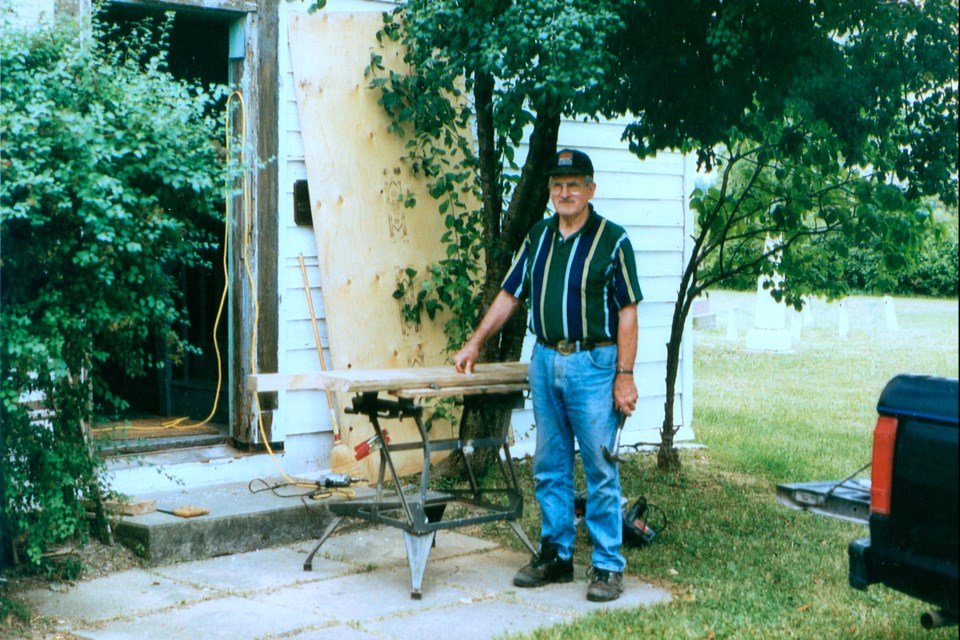In the 1980s and 90s, when city crews showed up to maintain the cemetery beside the Beaverdams Church, it wasn’t unusual to find Jim Smith working away in a solitary effort to battle nearly two centuries of nature's onslaught to preserve the historic structure.
The soft spoken, hard-working Smith expressed his hope that others would soon step up to aid in the work he understood to be vital in preserving a major Thorold landmark.
No one knew then that his efforts to fix doors and windows, patch holes and shore up the foundation would grow into one of Thorold’s premiere heritage restoration triumphs.
The Smith family farm has been in Beaverdams since 1796, even before Major George Neale formed the Methodist Congregation in 1797. In the early days church meetings were held at the home of Israel Swayze.
Beaverdams sat at one of the major crossroads of Niagara in the early 1800s and as the congregation grew, so did the necessity for a church. It was finally built in 1832.
The Church is also historically significant as Reverend Egerton Ryerson, who was the first minister to preach there, went on to establish Ontario's educational system.
There is little doubt that the parallel histories of the Smith family and the Methodist Church left Jim with a sense of duty toward alleviating its decline.
Beside the church is the Beaverdams Church Cemetery, which holds the remains of many of Thorold's early settlers, including the Egerter, Griffiths, Kelly, Swayze, Summers and Theal families, among others.
The mission statement of Heritage Thorold Local Architectural Conservation Advisory Committee (LACAC) explains its members are "Committed to the identification and preservation of buildings, structures and lands that are of cultural and/or historical value or interest and to initiating and promoting a conservation ethic and a climate of responsible stewardship of the community's cultural heritage assets."
LACAC identified the church as one of the most important heritage buildings still standing in the city of Thorold.
Efforts to preserve the church began in earnest in 1990, 100 years after the cessation of regular church services there in 1890. By 1991, consulting restoration architect Peter Stokes had provided an in-depth study.
Stokes reported that, “For over a century, this church has been supported privately as a community amenity and finally the community is catching up and is willing to share the responsibility toward its continuance."
Sparked by the efforts of Smith, the “community” that stepped up to tackle the major restoration grew into the Friends of Beaverdams Church.
By 1994 Thorold city council had approved heritage designation for the church.
In 1998, heritage resource consultant Jon Jouppien was commissioned by LACAC to complete a structural assessment of the church.
In December of 1998, LACAC asked Smith, who had been recognized as the person responsible for its upkeep, to provide the committee with a list of urgent problems that he'd observed.
In January of 1999, Smith reported he had been providing ongoing maintenance, including sash and glass repairs to the windows, stabilization of the floor and ceiling of the sanctuary, repair and waterproofing of drop edge door canopies, and installation of aluminum patches to outside siding.
Smith recommended replacing siding on the south side of the church, checking the perimeter plate for decay and the addition of vents in the foundation.
In late October 1999, Jouppien met with Smith to assess the condition of the building and discuss options necessary to proceed with stabilization, repairs and restoration of the building. By the end of 1999, the assessment by Jouppien was complete.
In 2010, the city of Thorold bought the church and sold it to the Friends of Beaverdams Church, which was incorporated in 2013 under the Ontario Historical Society’s Act. They have also assumed ownership of the cemetery.
Under the astute stewardship and fundraising efforts of the Friends, the foundation, roof, windows and exterior siding have been replaced. They have now turned their attention to restoring the interior.
Jim Smith passed away in May of 2005 but his decades-long solo effort planted the seed that grew into the restoration triumphs of the Friends. And that analogy is fitting of the patriarch to a family that continues a farming enterprise in Beaverdams that stretches back more than 220 years.
For more information visit the Friends of Beaverdams Church website.



